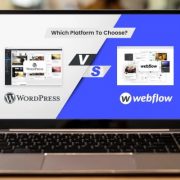The very first step in managing the procurement lifecycle is to determine what your project procurement lifecycle requires. But before going to the detailed method, you need to know the basics of the same. Once you know the basics and want to manage the lifecycle properly, the following steps will be helpful.
Here Are Some Crucial Steps To Manage The Procurement Lifecycle:

Step 1: Analyze the Requirements
As already mentioned, you will have to determine what your project of procurement lifecycle requires. Once established, you may determine whether to construct or source the needs in-house or outsource them to a provider.
People frequently purchase ‘off-the-shelf’ software products for the implementation because we do not have a software development team in-house to design them ourselves.
You could be in the same circumstance, or you might want to hire equipment that you don’t have on-site or want to do something else.
This is known as the make or purchase choice. When you understand the needs specification, you can decide whether you want to employ in-house resources to create the solution for you.
Step 2: Select the Best Vendor
If you cannot obtain what you require yourself, you must acquire it from a provider. That implies you must select a seller, which might be a difficult task. You should think about how soon a vendor can achieve your criteria and whether they can meet your project deadlines.
There are also a variety of business considerations to examine, such as the company’s viability and any credit arrangements they give that you can work with.
Your procurement lifecycle team should evaluate possible suppliers and cut the list down. Procurement specialists may have a list of favored suppliers to use as a jumping-off point. In some cases, corporations may be subject to limitations.
Step 3: Contract conditions should be negotiated with selected vendors
Following the selection of your favorite suppliers, the next stage is obviously to negotiate the final contract terms with them.
This step is critical in the calculation of fair pricing for both parties and is a chance to include any kind of additional payment term elements (such as dynamic discounting or supply chain finance) into the contract.
Before entering into talks, review any past contracts to discover possibilities to reduce expenses and save money. If your prior agreements were costly or had unrealistic conditions, utilize this information to iron out the finer elements of future arrangements. Rather than ordering them individually each time, try proposing a rolling contract.
Step 4: Service Delivery and Monitoring
Project managers will almost certainly be involved in this stage. Here, the vendor performs the task, and you ensure that it meets the appropriate standards.
They provide and collaborate with your project team to achieve their given responsibilities, which often include delivering the service or deploying the tool or whatever you purchased from them.
You will continue to monitor performance as long as the project is dependent on its delivery capacity. Use the contract terms as a guideline for determining whether or not they meet your expectations.
In the contract, there will be a timetable or write-up that discusses deadlines, quality measurements, and anything else.
Step 5: Renewing or Leaving
Just as your project must end, so must the procurement activity. The contract may naturally close at this time. If this is the case, all that remains is to pay the invoices, and the procurement lifecycle will be completed.
Some contracts, however, are long-term. For example, if you buy software, you may engage in a maintenance agreement that binds you to maintain the product for a set period of time. Outside the project lifespan, the contract may need to be renewed or canceled.
This occurs when the project has already been completed, but the contract is still in effect outside the original project for which it was employed.
Read Also:
















